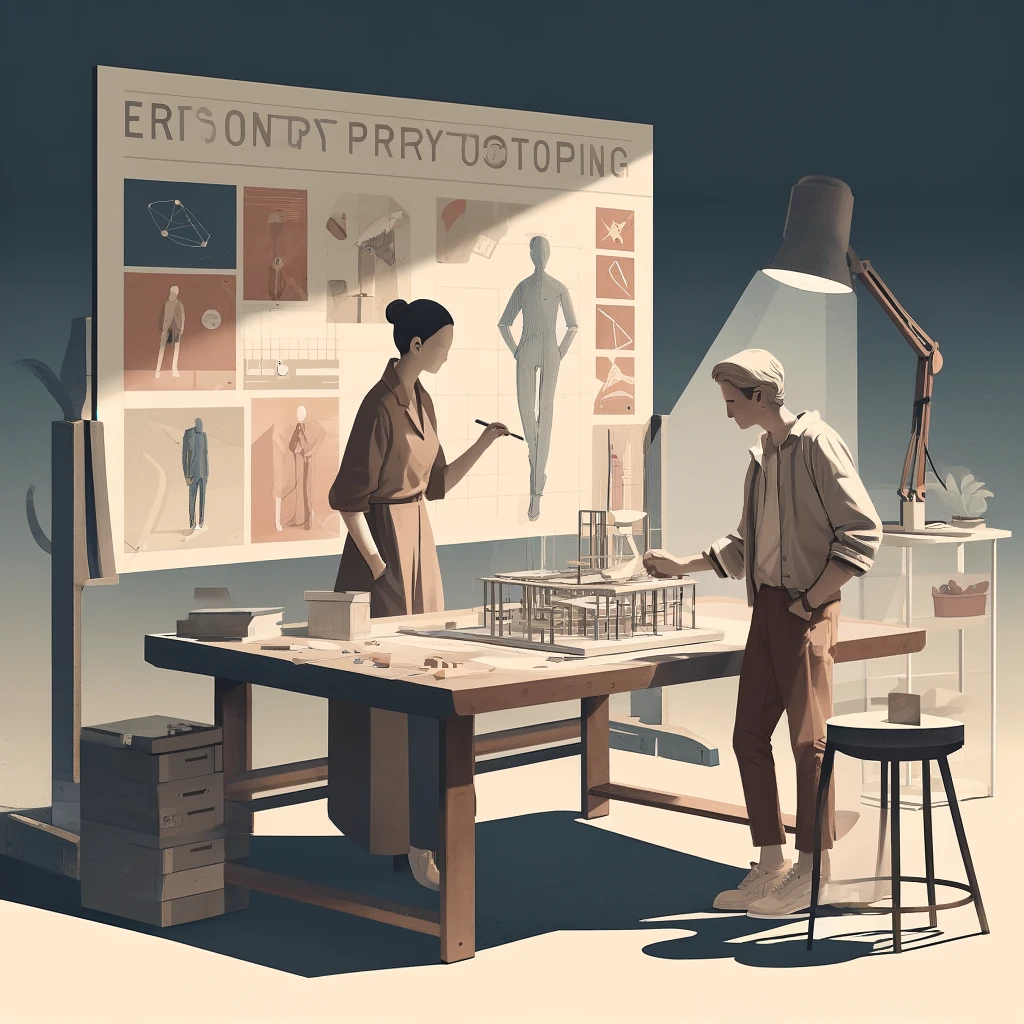
Top 10 Best Outsourced Product Development Companies
The year is 2024. Outsourcing, once the boogeyman of corporate development horror stories (“They took our jobs!”) has now become a badge of honor—a cunning strategy adopted...
Startups often face tough choices when it comes to product development. And there are a few ways to go about it: choosing between Prototype vs MVP vs PoC is an important choice.

Are they really so different? Or are they just some fancy words people use in software development?
Should your startup focus on a prototype, MVP, or PoC first?
The answer can mean the difference between success and failure. Choose the wrong approach, and you risk wasting time and resources on a product that fails to meet user needs.
In this article, we’ll explore the key differences between prototypes, MVPs, and PoCs, and help you determine which is right for your startup’s stage and goals. You’ll learn:

A prototype is an early sample or model of a product used to test and validate ideas before investing significant resources in development. Prototypes can range from low-fidelity paper sketches to high-fidelity interactive digital models, depending on the stage of the design process and the specific aspects being tested.
Low-fidelity prototypes, such as paper sketches or wireframes, are quick and inexpensive. They allow designers to explore multiple concepts and gather early user feedback on layout, navigation, and overall usability. High-fidelity prototypes, however, more closely resemble the final product and are used to test detailed interactions, functionality, and visual design.
Prototyping is an iterative process, with each iteration incorporating user feedback and refining the design. This approach helps identify usability issues and design flaws early on, reducing the risk of developing a product that does not meet user needs.

While both prototypes and PoCs are used to validate ideas, they serve different purposes. A prototype focuses on the design and user experience aspects of a product, while a PoC is used to demonstrate the technical feasibility of a concept.
Purpose:
Level of Detail:
Prototypes are often created by designers and UX professionals, while PoCs are typically developed by engineers or technical teams.

An MVP is a basic version of a product that helps test its value. The goal of an MVP is to test the product and gather feedback with minimal development. By focusing on the most useful features, startups can quickly bring a product to market and start learning from customers. This lets you make changes based on what users say. It helps you make a product that meets the needs of your target audience.
Dropbox’s famous MVP is a good example. Instead of building a full file synchronization tool, founder Drew Houston made a simple video showing how the product would work. The video generated interest, validating the demand for the product and securing funding.
While both MVPs and prototypes are used to validate product ideas, they differ in their purpose and level of functionality. A prototype is used to test and refine design concepts, while an MVP is a functional product that is released to early customers to assess product-market fit.
Purpose
Development Time and Resources
An MVP includes the core features necessary to deliver value to users, whereas a prototype may only simulate certain aspects of the product. MVPs are typically more resource-intensive to develop than prototypes, as they require functional backend systems and robust enough infrastructure to support real-world use.

A proof of concept (PoC) is a small project to test a product idea. The goal is to show that a product can be made with the resources, technologies, and constraints available.
Engineering teams create PoCs by implementing the product’s core functionality. This helps identify technical challenges, potential problems, and areas that need more work.
If a product idea is viable from a technical standpoint, startups can build confidence among investors and internal stakeholders, increasing the likelihood of securing resources to bring the product to market.
Prototypes are essential tools for testing and refining product design and user interactions before investing in full-scale development. By creating clickable or interactive mock-ups, startups can experiment with different layouts, workflows, and features to determine the most intuitive and engaging user experiences.
Feedback from prototype user testing is invaluable for improving the usability and appeal of the final product. Startups can conduct usability testing, surveys, and interviews to understand user preferences, pain points, and expectations. This feedback loop helps iterate the design until it effectively meets user needs and delivers a seamless experience.

MVPs let startups launch their core offering faster, gain market traction, and learn from real users. By focusing on the essential features that deliver the primary value proposition, startups can avoid over-engineering and get to market faster.
MVPs let startups test their key assumptions and hypotheses with real users. By analyzing user engagement, startups can decide which features to prioritize, improve, or abandon.
MVPs need to be continuously improved based on user feedback. Startups should have a plan for collecting and acting on user feedback, usage metrics, and market trends. This helps startups respond to changing user needs and competitive landscapes.
Startups can use Proofs of Concept (PoCs) to test their ideas and find out if they can work. PoCs help startups with new ideas, complex systems, or new ways of doing things. They help startups to test their ideas and find out if they can work.
From a business perspective, PoCs help startups get funding and partnerships. By showing that their solution is viable and will work, startups can get more funding and partners.
When deciding whether to start with a prototype, MVP, or PoC, it’s essential to consider your product’s maturity and the primary uncertainties you need to address. As Marty Cagan, the author of “Inspired: How to Create Tech Products Customers Love,” states, “The purpose of a prototype is to explore and validate solutions for the most important product risks.”

Don’t wait until you have a fully fleshed-out idea to start prototyping. Begin with basic prototypes early in the design process to get a rough idea of how things will function. This allows for early course correction based on user feedback.
The core purpose of an MVP is to test if there’s a market for your product idea. It’s a basic version with just enough features to solve a core user problem and gather user feedback. This helps you determine if there’s interest before investing heavily in development.
When you have an idea that involves new or unproven technologies, a PoC can demonstrate if it’s technically possible to build what you envision. It’s a small-scale implementation that focuses on the core functionality to see if it can work in practice.

The lean startup methodology helps you develop products quickly and efficiently. It has three stages: build, measure, and learn. By using this methodology, you can test ideas, gather feedback, and make changes based on real-world data.
In the ideation stage, proof of concepts (PoCs) are used to test product ideas. A PoC is an experiment to test if a product is possible and if there is a market for it. For example, a PoC could be a simple landing page to test interest in a new product.
Once a concept is validated, the design stage begins. This is where prototypes come into play. Prototypes are early versions of a product that allow users to interact with it and provide feedback. They help identify usability issues, refine features, and ensure the product meets user needs. Prototypes can range from simple paper mockups to more advanced digital versions.
After the design is finalized, the development stage starts. This is where minimum viable products (MVPs) are created. An MVP is a version of the product with just enough features to satisfy early customers and gather feedback for future development. MVPs let startups test their product in the market, learn from users, and decide which features to prioritize.

Agile development is a project management approach that emphasizes flexibility, collaboration, and iterative delivery. By developing prototypes, PoCs, and MVPs in short sprints (typically 1-4 weeks), startups can regularly review progress, gather feedback, and adapt their product backlog accordingly.
One popular agile framework is Scrum. In Scrum, the product development process is divided into sprints, each with a specific goal and deliverable. The team holds daily stand-up meetings to discuss progress, identify obstacles, and ensure everyone is aligned. At the end of each sprint, the team conducts a review to demonstrate the work completed and gather feedback from stakeholders.
Another agile approach is Kanban, which focuses on visualizing work, limiting work in progress, and optimizing flow. With Kanban, the team uses a board to represent the workflow, with columns for each stage of development (e.g., to-do, in progress, testing, done). This helps identify bottlenecks, prioritize tasks, and ensure a steady flow of work.
By adopting agile practices, startups can develop prototypes, PoCs, and MVPs more efficiently, respond to change quickly and deliver value to users faster.

One of the key benefits of implementing prototypes, PoCs, and MVPs is the ability to gather data and insights to inform product decisions. By measuring user engagement, feedback, and key metrics, startups can validate their assumptions, identify areas for improvement, and make data-driven decisions about what features to prioritize.
However, it’s important to be prepared to pivot your product strategy based on validated learning. If the data shows that a particular feature or approach isn’t resonating with users, don’t be afraid to change course. Pivoting is a common occurrence in the startup world, and it’s often necessary to find product-market fit.
For example, Slack, the popular messaging app, started as an internal tool for a game development company. When the game failed to gain traction, the team pivoted to focus on the messaging tool, which became a huge success. By being open to change and listening to user feedback, Slack was able to find its niche and grow into the company it is today.
While not every project requires all three stages, a common progression is POC -> Prototype -> MVP. This allows you to efficiently validate the core idea, refine the design, and test market fit before investing significant resources in full development.
Prototypes, MVPs, and PoCs help startups validate ideas, mitigate risk, and accelerate product development. By understanding when to use each approach, you can make informed decisions and bring your product vision to life.

Prototypes help refine design and user experience, MVPs help learn and iterate quickly, and PoCs help validate technical feasibility. Integrating these approaches into your development process helps you build products that users love and drive business growth.
If you don’t know how to choose between Poc vs Prototype vs MVP, consider hiring software development experts like IdeaLink who can turn your idea into reality.
Remember, product success is rarely a straight line. Embrace the twists and turns, learn from users, and adjust your strategy as needed. With the right mindset and the right tools, you can make your startup vision a reality.